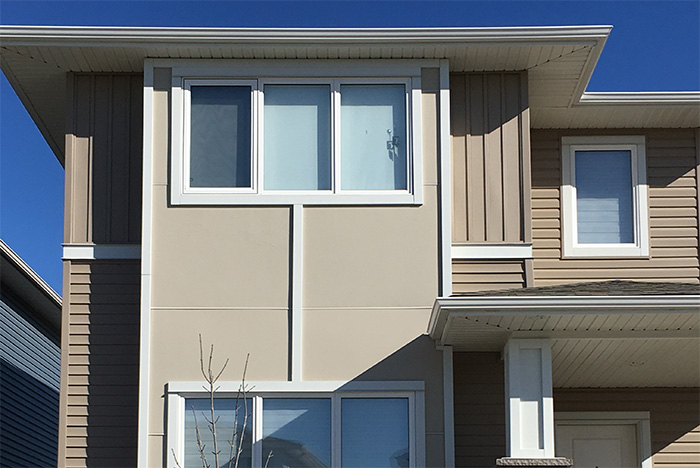
Richply specialty overlays are general purpose paint-grade plywood panels coated with an exterior phenolic-resin-impregnated Medium Density Overlay (MDO) that is permanently bonded to the panel. The toughness of a plywood structural panel combined with the superior wear of an overlaid surface result in a highly versatile panel with superior surfaces for finishing for use in both the commercial sign and residential constructions industries.
Richply offers general purpose paint-grade plywood in a variety of overlay combinations (1-Side, 2-Sides, and 1-Side with Backer) and surface qualities (1-Step and 2-step).
1-Step refers to the manufacturing process where MDO paper and the veneer layers (plies) are bonded together with resin adhesive, under heat and pressure, in one-pass through a hot press (or first/one step). 2-Step refers to the manufacturing process where the veneer layers (plies) are bonded together with resin adhesive, under heat and pressure in the hot press, to make the plywood substrate as a first step. The panel substrate is then repaired and sanded to provide a superior smooth surface prior to applying the MDO paper in a second pass through the hot press (or second step).
Armorbond® 2-Step MDO is Richply’s market leading brand featuring smooth sanded surfaces beneath unfinished kraft brown overlays for either interior or exterior paint applications. Richply paint-grade plywood panels are ideal for any applications requiring strength, durability, workability, paintability, weather resistance, and ease of fabrication and installation.
All Richply paint grade panels are certified under quality assurance by APA – The Engineered Wood Association to meet or exceed design specifications according to CSA (Canadian Standards Association) and/or U.S. Voluntary Product Standard PS-1 for Structural Plywood.
All Richply specialty overlay panels are bonded under high temperature and pressure with phenol-formaldehyde resin adhesive for an Exterior glue bond classification. Richply specialty overlay panels have No Added Urea-Formaldehyde (NAUF) and are exempt from US HUD, CARB, and ATCM (Title VI) formaldehyde regulations due to very low emission rates.


